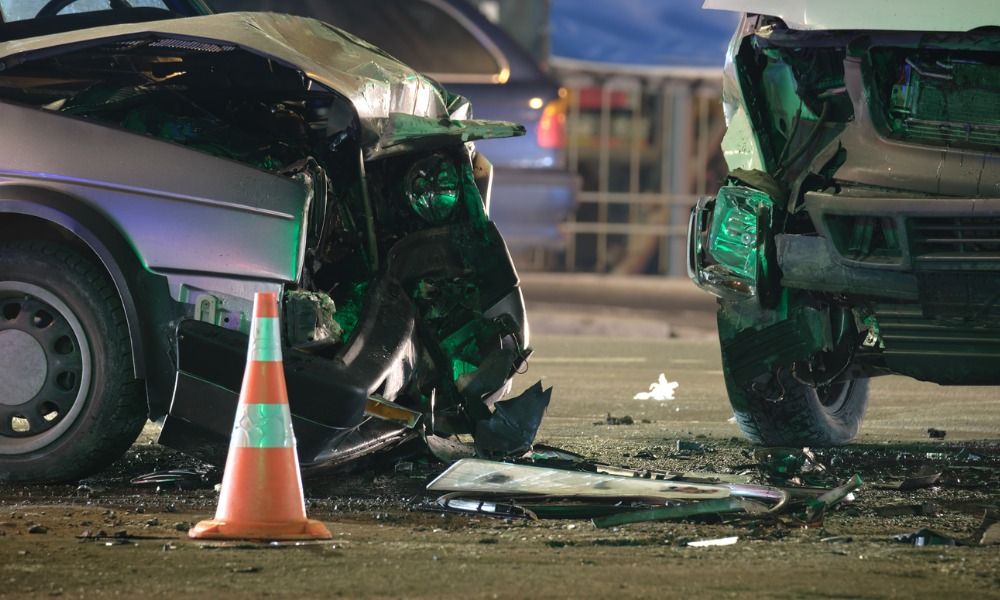
Ruling reverses driver's acquittal for dangerous operation of motor vehicle causing bodily harm

The Ontario Court of Appeal recently overturned the acquittal of a man charged with the dangerous operation of a motor vehicle causing bodily harm, ordered a new trial, and allowed the admission of previously excluded evidence.
The case stemmed from a serious motor vehicle collision that occurred in March 2018 at the intersection of Highway 50 and Queen Street in Brampton, Ontario. The respondent in this case was driving a Lexus southbound on Highway 50. His vehicle collided with a Toyota Corolla attempting to turn left onto Queen Street East.
The Corolla’s driver suffered serious injuries, including fractures to her left femur, left clavicle, and left wrist, as well as a pulmonary laceration and a head contusion. She needed surgery to remove her spleen and part of her colon. The respondent, also injured during the collision, was likewise taken to the hospital.
Police seized both vehicles and extracted data from their event data recorders (EDR) without obtaining a warrant or the consent of the vehicle owners. The EDR is a device that records limited vehicle data such as speed, throttle position, and braking for the five seconds preceding a collision.
The respondent challenged the admissibility of the EDR evidence. He argued that the warrantless seizure and search of his car and its EDR violated his rights under s. 8 of the Canadian Charter of Rights and Freedoms, which covered the protection against unreasonable search and seizure.
The trial judge agreed with the respondent, excluded the EDR evidence, and acquitted him after a brief trial. The respondent had a reasonable expectation of privacy in the EDR data, the judge said. The police lacked reasonable grounds to seize the vehicles under s. 489(2) of the Criminal Code, which permitted warrantless seizures under certain circumstances, the judge added.
The Crown appealed the decision. The Crown argued that the trial judge erred in both his interpretation of the law and his assessment of the evidence. The Crown contended that the police had reasonable grounds to seize the vehicles and that there was no reasonable expectation of privacy in the EDR data once the vehicles were lawfully seized.
In R. v. Attard, 2024 ONCA 616, the Ontario Court of Appeal allowed the appeal of the Crown and ordered a new trial in this case. The appeal court found multiple errors in the trial judge’s reasoning.
First, the appeal court held that the investigating officer had reasonable grounds to seize the vehicles. The officer’s initial suspicion of excessive speed at the crash site, combined with subsequent investigations, gave him reasonable grounds to believe that the vehicles contained evidence relevant to a dangerous driving offence, the appeal court explained.
Second, the appeal court ruled that the lawful seizure of the vehicle extinguished any reasonable expectation of privacy in the EDR and its data. As a component of the vehicle, the EDR was impersonal and was not analogous to personal computers, location trackers, or other devices potentially involving higher privacy protections, the appeal court said. The EDR data, which was limited to five seconds before a crash, did not reveal intimate details about the driver, the appeal court added.
The appeal court then addressed the judge’s decision to exclude the EDR evidence under s. 24(2) of the Charter, which allowed the exclusion of evidence obtained in a manner that infringed Charter rights if admitting it would bring the administration of justice into disrepute. On this issue, the appeal court determined that the judge unreasonably characterized the police conduct as serious misconduct and in bad faith, considering the conflicting case law on the issue of EDR data privacy.
Lastly, the appeal court decided that the impact on the respondent’s privacy interests was minimal and that the exclusion of the EDR evidence was unjustified, given its significance to the Crown’s case.